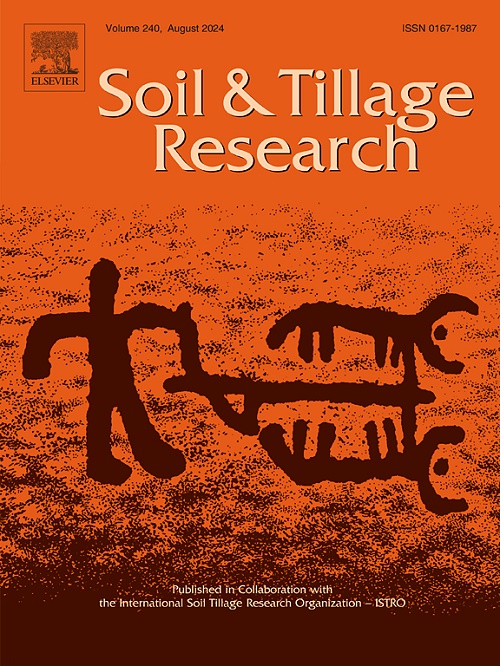Adaptive regulation of microbial community characteristics in response to nutrient limitations under mulching practices across distinct climate zones
IF 6.1
1区 农林科学
Q1 SOIL SCIENCE
引用次数: 0
Abstract
Soil nutrient stoichiometric imbalance result in nutrient limitation for microbial metabolism, which subsequently affects the microbial community structure. However, the differences in microbial metabolic limitations and adaptive regulatory strategies of microorganisms in response to mulching practices and varying climatic conditions have not yet been fully clarified. This study evaluates three treatments, straw mulch planting (SM), plastic-film mulch planting (PM), and conventional flat planting (CK) to assess the response of microbial metabolic limitation and community structures to mulching measures across three climate zones: the temperate semi-arid zone (Yuzhong), the mid-temperate semi-arid zone (Dingxi), and the warm temperate semi-humid zone (Changwu) in the Loess Plateau, China. The results indicate that microbial metabolism had strong relative carbon (C) and phosphorus (P) limitations at our study sites. Soil nutrient imbalances caused by mulching measures under different climatic conditions alter the degree of microbial nutrient limitation. Compared with CK, microbial P limitation under the SM treatments was 5.9 % lower, with the largest reduction in Changwu, whereas the PM treatment increased microbial P limitation by 4.1 %, with the largest increase in Yuzhong. The microbial community structures in Yuzhong and Dingxi exhibit greater sensitivity to soil physicochemical properties and microbial metabolic limitations. The bacterial Chao1 index in PM in Yuzhong and Dingxi and the fungal Chao1 index in SM in Yuzhong significantly increased relative to CK. Mulching measures had no significant effect on bacterial and fungal diversity or bacterial abundance in Changwu. Furthermore, redundancy discriminant analysis demonstrated that the variable explanations of soil physicochemical properties, stoichiometry, and microbial resource limitations were higher in Yuzhong and Dingxi than in Changwu. Further, soil water content and vector angle were the main factors driving the separation of soil samples at the microbial order level. All in all, these results enhance our understanding of how mulching measures regulate microbial communities across different climatic regions, particularly in response to varying precipitation patterns. Further research is needed to determine how mulch-induced nutritional limitation changes the ecological functions of microbes in agroecosystems.
求助全文
约1分钟内获得全文
求助全文
来源期刊

Soil & Tillage Research
农林科学-土壤科学
CiteScore
13.00
自引率
6.20%
发文量
266
审稿时长
5 months
期刊介绍:
Soil & Tillage Research examines the physical, chemical and biological changes in the soil caused by tillage and field traffic. Manuscripts will be considered on aspects of soil science, physics, technology, mechanization and applied engineering for a sustainable balance among productivity, environmental quality and profitability. The following are examples of suitable topics within the scope of the journal of Soil and Tillage Research:
The agricultural and biosystems engineering associated with tillage (including no-tillage, reduced-tillage and direct drilling), irrigation and drainage, crops and crop rotations, fertilization, rehabilitation of mine spoils and processes used to modify soils. Soil change effects on establishment and yield of crops, growth of plants and roots, structure and erosion of soil, cycling of carbon and nutrients, greenhouse gas emissions, leaching, runoff and other processes that affect environmental quality. Characterization or modeling of tillage and field traffic responses, soil, climate, or topographic effects, soil deformation processes, tillage tools, traction devices, energy requirements, economics, surface and subsurface water quality effects, tillage effects on weed, pest and disease control, and their interactions.
 求助内容:
求助内容: 应助结果提醒方式:
应助结果提醒方式:


